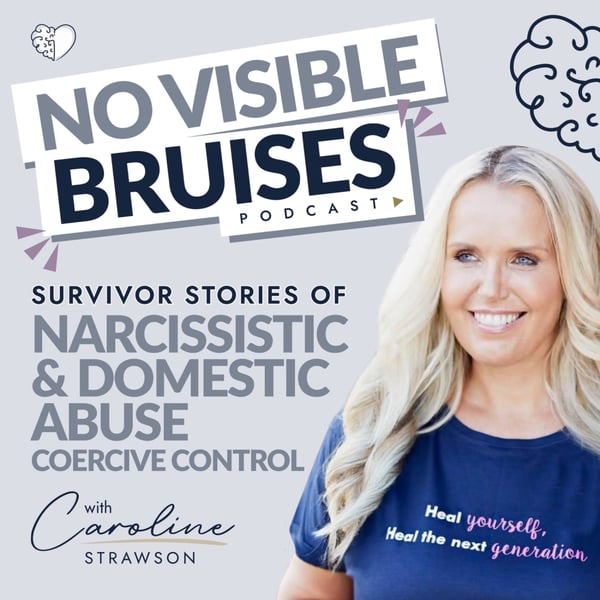Anxiety, Depression and Narcissistic Abuse
No Visible Bruises
Caroline Strawson
4.8 • 701 Ratings
🗓️ 8 December 2020
⏱️ 19 minutes
🧾️ Download transcript
Summary
Today we’re talking about anxiety and depression, not as mere symptoms that need to be treated, but as parts of us showing up for a certain reason. Let’s ask ourselves - why are we anxious, why are we depressed, why are those parts showing up?
What You Will Learn In This Episode:
- Looking at anxiety and depression as trauma responses within our body
- Deb Dana's ladder analogy in the context of narcissistic relationships
- The role of anxiety as the sympathetic trauma response
- The role of depression in our system state
- How to look at anxiety and depression as parts of ourselves and not identify with them
- The reason why people stay in abusive relationships
- How to understand the intentions of all our parts and welcome them to our system
Once we see anxiety and depression as parts of us reacting to trauma, we will realise that we are not a depressed or anxious individual, but we have parts that are showing up in order to distract us and soothe us from feeling the pain of our younger, wounded part.
Resources:
- Join my Facebook group at https://www.facebook.com/groups/thriveafternarcissisticabuse
- Connect with me on Instagram: https://www.instagram.com/carolinestrawson/
Transcript
Click on a timestamp to play from that location
| 0:00.0 | Welcome to the narcissistic abuse recovery podcast. I'm Caroline Stawson and I'll be sharing with you |
| 0:09.2 | awareness, understanding and education about the devastating effects of narcissistic abuse to help you thrive. |
| 0:16.8 | I want you to know that I've been exactly where you are now and I believe you. |
| 0:21.4 | And this show is all about taking you from trauma to transformation. |
| 0:30.0 | In this episode, I want to talk to you about depression and anxiety whilst in or when you come out of a narcissistic relationship. |
| 0:41.1 | You know, depression and anxiety are trauma responses within our body and really are great |
| 0:47.9 | descriptors of system states that happen. So I'm going to break this down for you. I want you to |
| 0:53.8 | imagine a ladder now. |
| 0:55.5 | And at the top of that ladder is when we feel safe and connected. And I'm going to use the |
| 1:01.8 | polyvagal theory when I talk about this. And I'm going to use Deb Dana's analogy using the ladder. |
| 1:08.2 | So that top of the ladder is when we are feeling the most maybe in control. |
| 1:13.8 | It's when we're in our adult self. And it's when we recognize that challenges can happen in our |
| 1:20.5 | life, but we are still safe enough to feel like we can deal with them. Now, if something happens in our life that our brain |
| 1:31.2 | perceives to be dangerous, we start to move down that ladder. And we move into the middle of the |
| 1:39.3 | ladder now, into what we call our sympathetic nervous system. And that is where we will go into fight or flight. |
| 1:47.0 | So that moment, our brain perceives threat or danger, our system state becomes in our nervous |
| 1:53.3 | system, in our autonomic nervous system, fight or flight. Now, this tends to be when we become more |
| 2:00.2 | angry, maybe we might become anxious, and it's when our body |
| 2:05.4 | starts to produce more cortisol. So we'll produce adrenaline and then cortisol. Now, of course, |
| 2:12.4 | if we were being attacked or something major happening, we need this natural body response to occur. |
| 2:19.7 | Because if we needed that extra bit of cortisol or adrenaline to either fight somebody or |
| 2:25.4 | something off or to run away, to fight, we're going to need that extra energy. |
... |
Please login to see the full transcript.
Disclaimer: The podcast and artwork embedded on this page are from Caroline Strawson, and are the property of its owner and not affiliated with or endorsed by Tapesearch.
Generated transcripts are the property of Caroline Strawson and are distributed freely under the Fair Use doctrine. Transcripts generated by Tapesearch are not guaranteed to be accurate.
Copyright © Tapesearch 2025.

